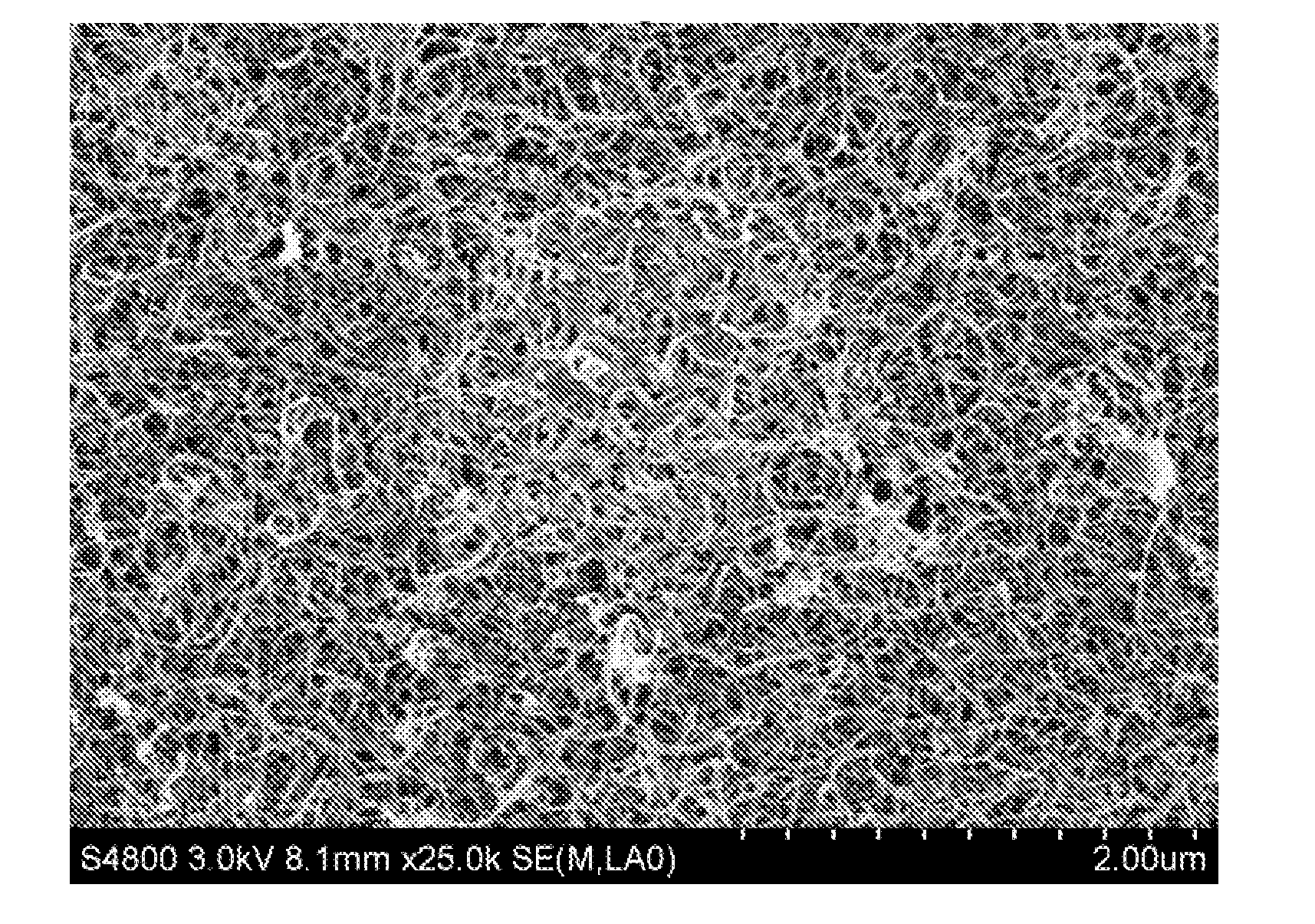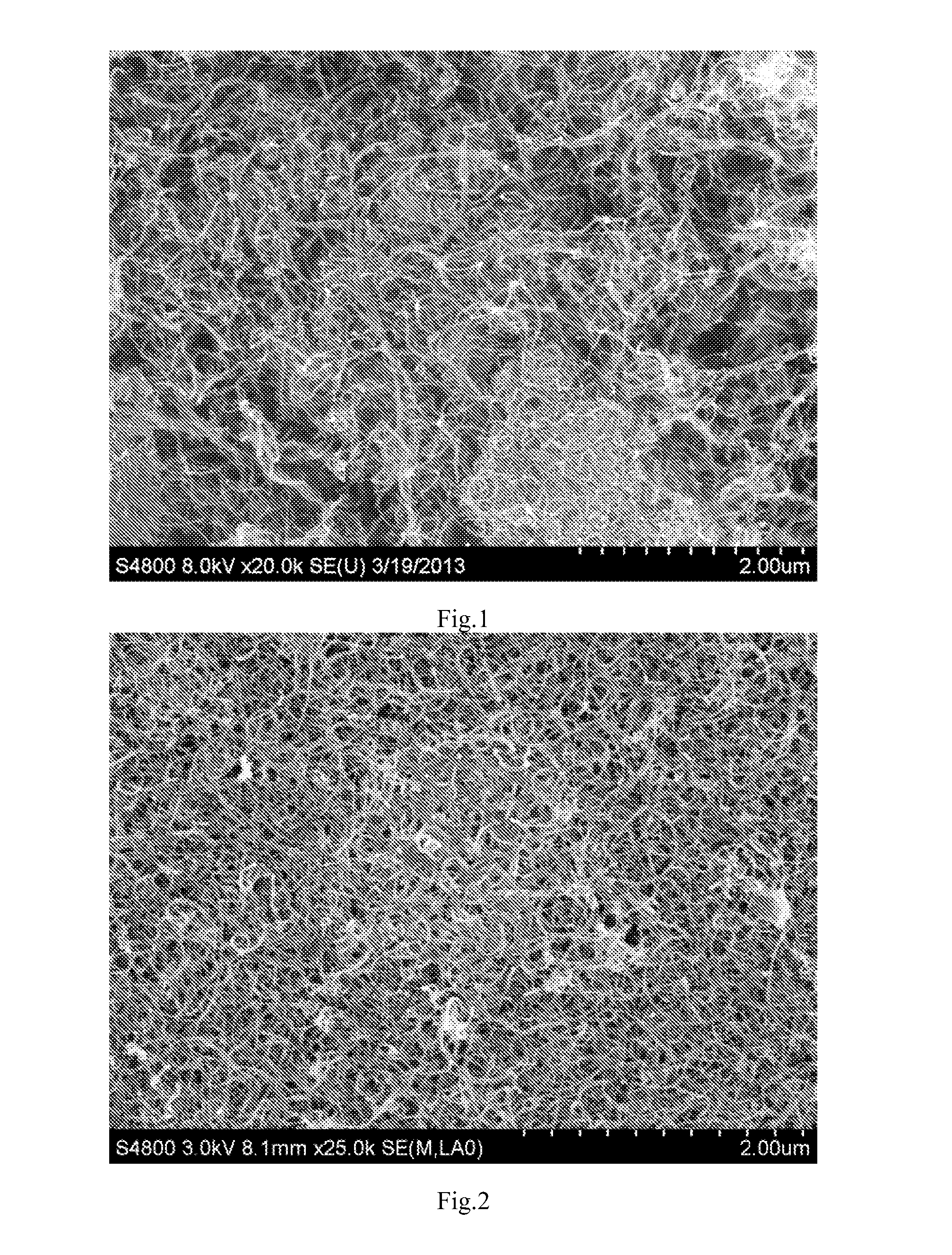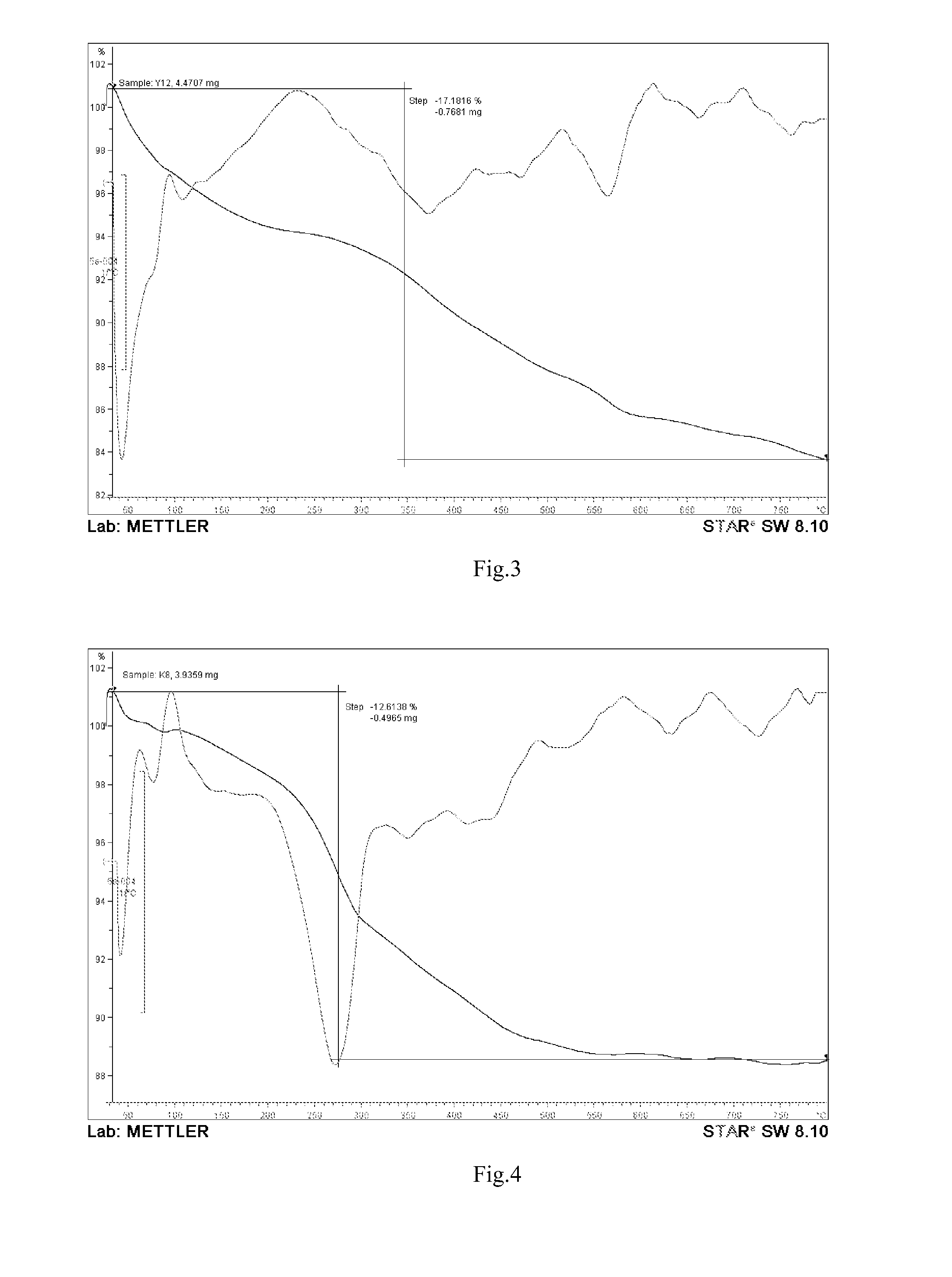General method for functionalizing carbon nanotubes via solvent free diels-alder reactions
a technology of carbon nanotubes and dielsalders, applied in the field of carbon nanotubes, can solve the problems of not being able to mix in sufficient quantity, not being able to meet the requirements of a range of hosts, and negatively affecting the characteristics of the resulting mixture, so as to achieve the effect of restoring the conductivity of carbon nanotubes and increasing electrical conductivity
- Summary
- Abstract
- Description
- Claims
- Application Information
AI Technical Summary
Benefits of technology
Problems solved by technology
Method used
Image
Examples
examples
[0051]The weight loss of the functionalized carbon nanotubes is about 11.5% as indicated by TGA spectrum performed under inert atmosphere, as shown in FIG. 3. This is transformed into a concentration of functional groups of about 1.7 mmol / g. The bulk resistance of functionalized nanotubes is 3449 uΩ·m, while after annealing, the bulk resistance reduced to 2919 uΩ·m. The detailed data are listed in Table 1.
[0052]The weight loss of the functionalized carbon nanotubes is about 30.2% as indicated by TGA spectrum performed under inert atmosphere. This is transformed into a concentration of functional groups of about 1.7 mmol / g. The bulk resistance of functionalized nanotubes is 2097 uΩ·m, while after annealing, the bulk resistance reduced to 1537 uΩ·m. The detailed data are listed in Table 1.
[0053]The weight loss of the functionalized carbon nanotubes is about 15.4% as indicated by TGA spectrum performed under inert atmosphere. This is transformed into a concentration of functional group...
PUM
| Property | Measurement | Unit |
|---|---|---|
| Temperature | aaaaa | aaaaa |
| Temperature | aaaaa | aaaaa |
| Fraction | aaaaa | aaaaa |
Abstract
Description
Claims
Application Information
 Login to View More
Login to View More - R&D
- Intellectual Property
- Life Sciences
- Materials
- Tech Scout
- Unparalleled Data Quality
- Higher Quality Content
- 60% Fewer Hallucinations
Browse by: Latest US Patents, China's latest patents, Technical Efficacy Thesaurus, Application Domain, Technology Topic, Popular Technical Reports.
© 2025 PatSnap. All rights reserved.Legal|Privacy policy|Modern Slavery Act Transparency Statement|Sitemap|About US| Contact US: help@patsnap.com



